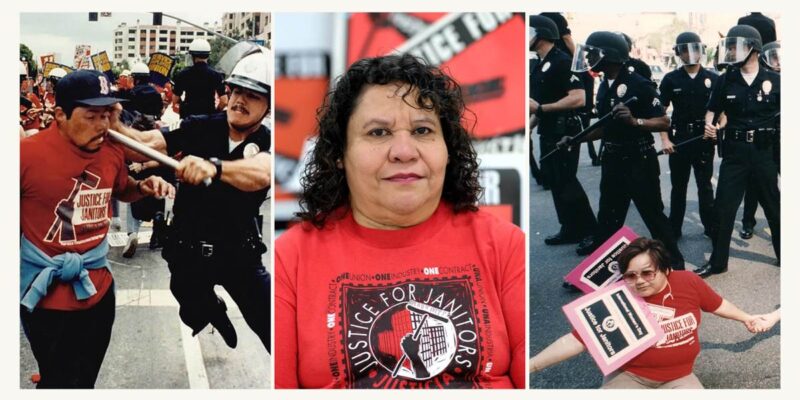
This story is a collaboration with the Economic Hardship Reporting Project and Magnum Foundation. We asked photographers to show us the paradox of today’s labor movement. Even as the popularity of unions has grown over the last decade, actual membership has continued to decline. Can new enthusiasm revitalize American labor? Read about this unique moment for workers here.

Dock workers. Bus drivers. Screenwriters. Cooks. Teachers. Actors. Teaching assistants. Hotel workers. Strippers. Amazon drivers. In 2023, in Los Angeles, all these workers were either on strike, walking out, or picketing, or publicly pushing for more.
It wasn’t always this way in LA. For decades, the city had a reputation as an anti-union town. But, in 1990, there was a major change with the Justice for Janitors campaign.
In the previous decade, as unions were struggling to build membership, janitors became a focus. Cleaning contractors had undercut their prices to service large buildings, costing the janitors a hefty chunk of their wages. Justice for Janitors was an attempt to fight back.
Workers organized a march in Century City, one of the city’s wealthy commercial centers. But police attacked the protesters—injuring dozens and causing one woman to miscarry. The assault electrified the city, made national news, and in the following years brought a flood of supporters, including the Reverend Jesse Jackson.
The concessions won by Justice for Janitors in Los Angeles inspired similar efforts across the country, changing an organizing campaign into an actual movement that made important gains for low-wage workers.
Today, even as organized labor continues to build on lessons learned from Justice for Janitors, this powerful chapter in Los Angeles history is unknown to many.
This project layers images of today’s strong unions in Los Angeles with images and stories from the Justice for Janitor days. The images are tied together by handwritten text that includes comments from union workers who were active then and now.
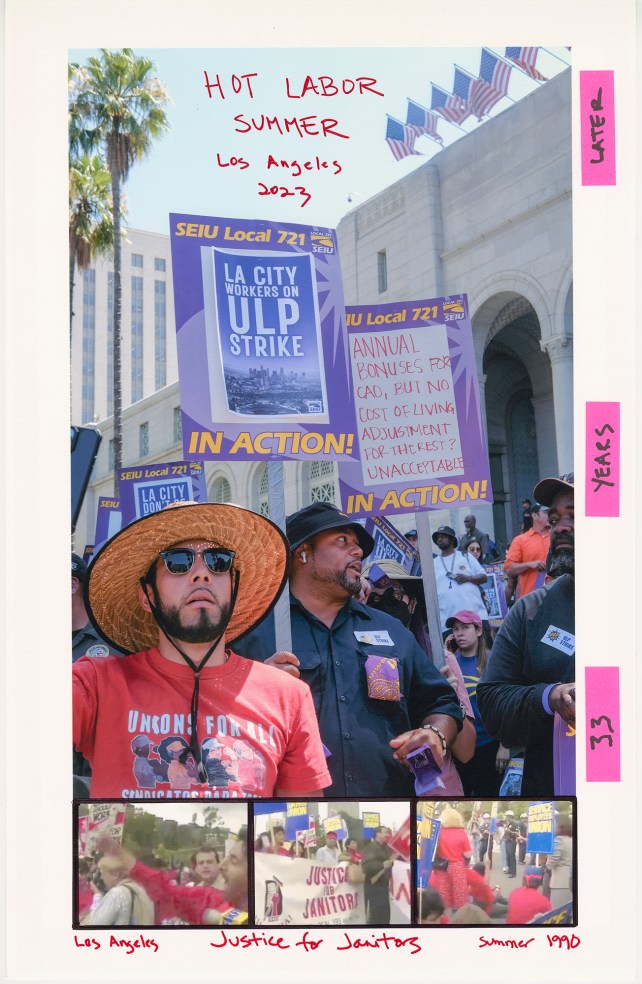
On August 8, 2023, some 11,000 workers with SEIU Local 721 participated in the first major walk-out by Los Angeles municipal employees in decades—it included trash collectors, lifeguards, traffic officers, and mechanics. The film strip at the bottom is made up of screen shots from a 95-second video of the Justice for Janitors peaceful protest outside office buildings in Century City in Los Angeles, a historic moment in Los Angeles labor history. Shortly after these first frames in the video were shot, police officers began beating the janitors and their supporters.
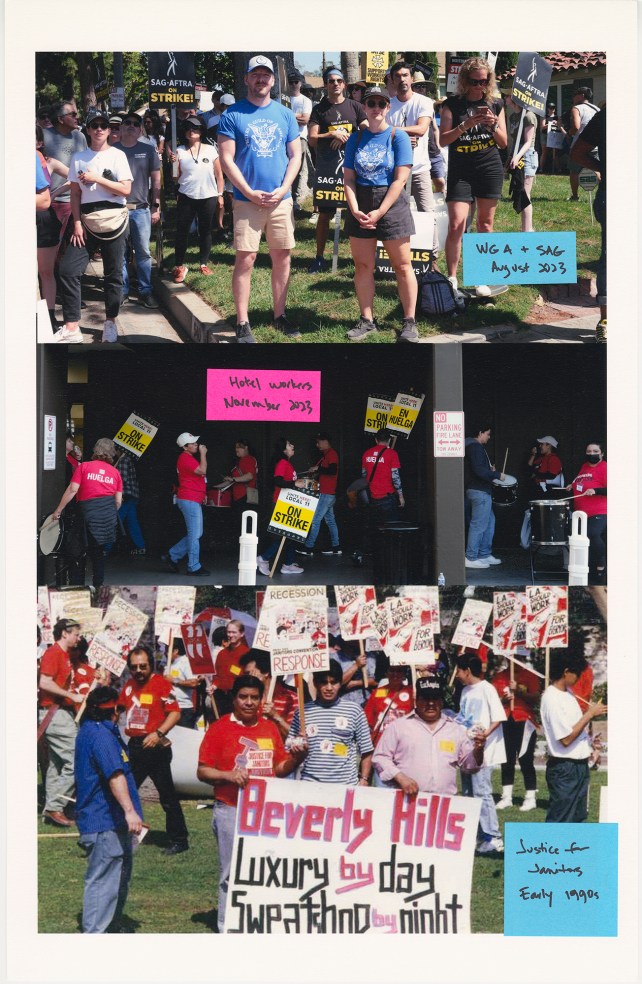
Top, a Writers Guild of America and SAG-AFTRA rally outside Walt Disney Studios in Burbank, on August 22, 2023. Center, Hotel workers from Unite Here Local 11 picket the Sheraton Four Points near LAX on December 6, 2023. Bottom, an archival photo of a Justice for Janitors event in Beverly Hills.
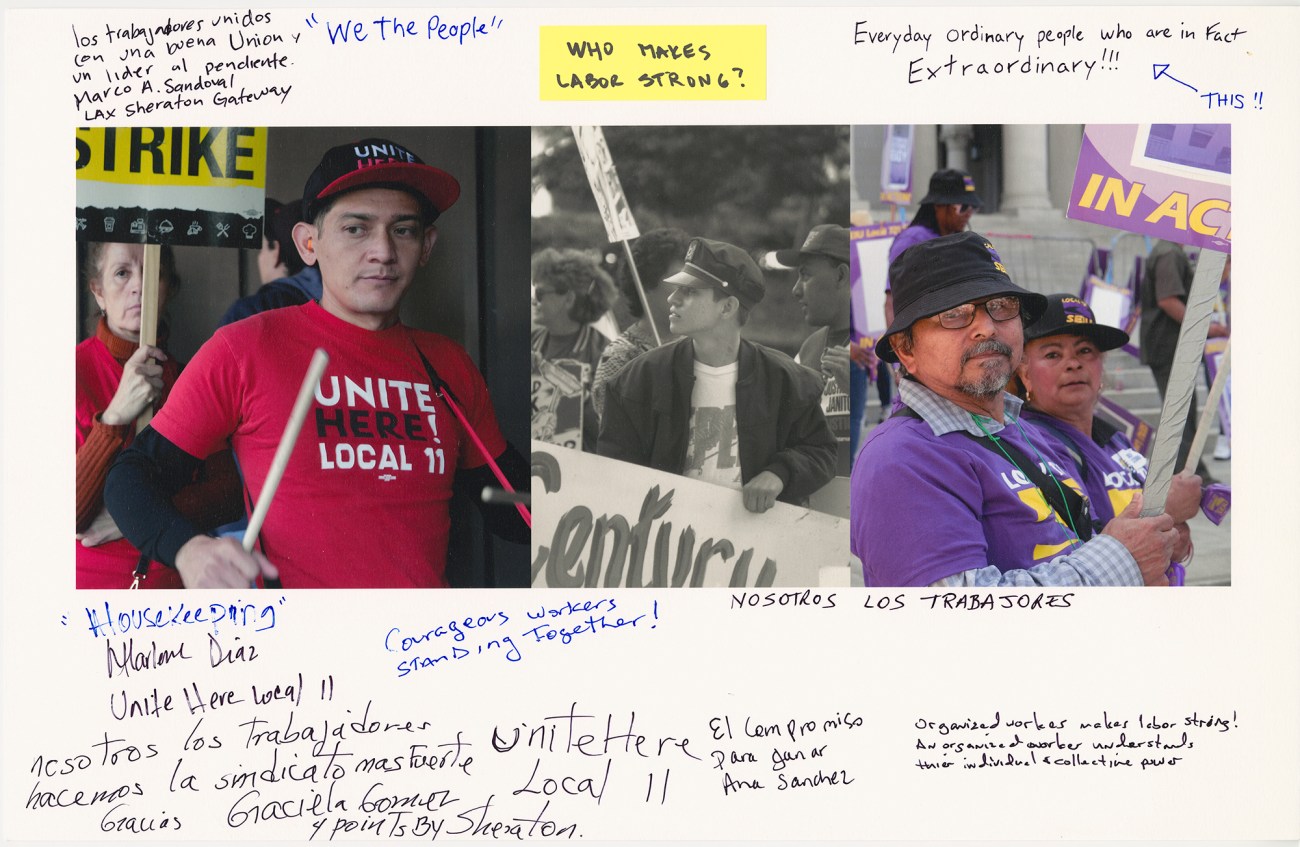
Workers on the picket lines: Left, a hotel worker from Unite Here Local 11 outside Sheraton Four Points hotel near LAX on December 6, 2023. Center, an archival portrait of a striking janitor at a 1990 Justice for Janitors action. Right, city workers at a rally during the 24-hour work stoppage of municipal employees on August 8, 2023.
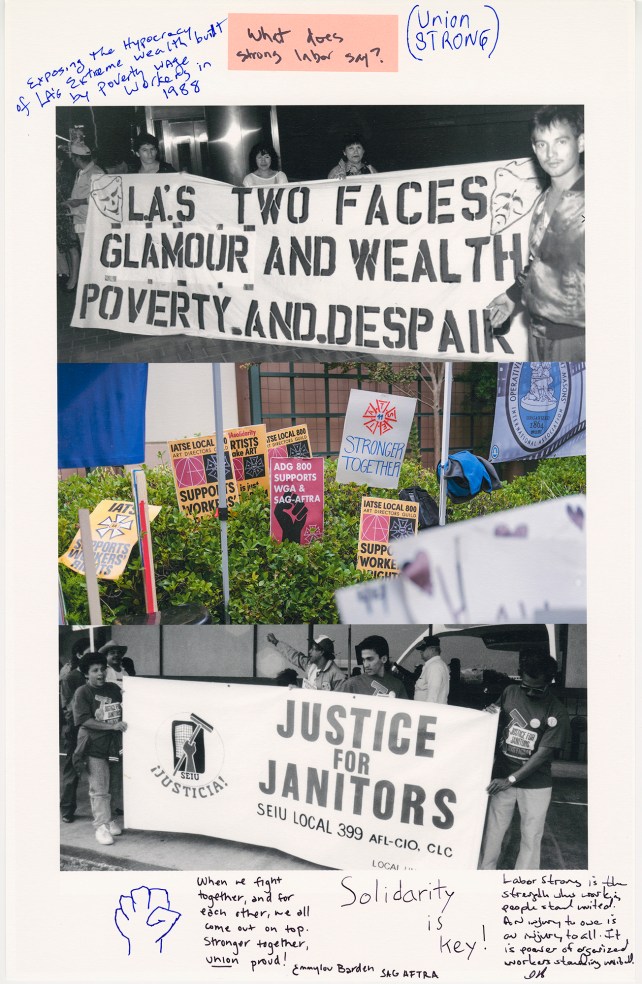
Protest signs—top and bottom, archival photos from the Justice for Janitors campaign. Center, signs from a SAG strike in October 2023.
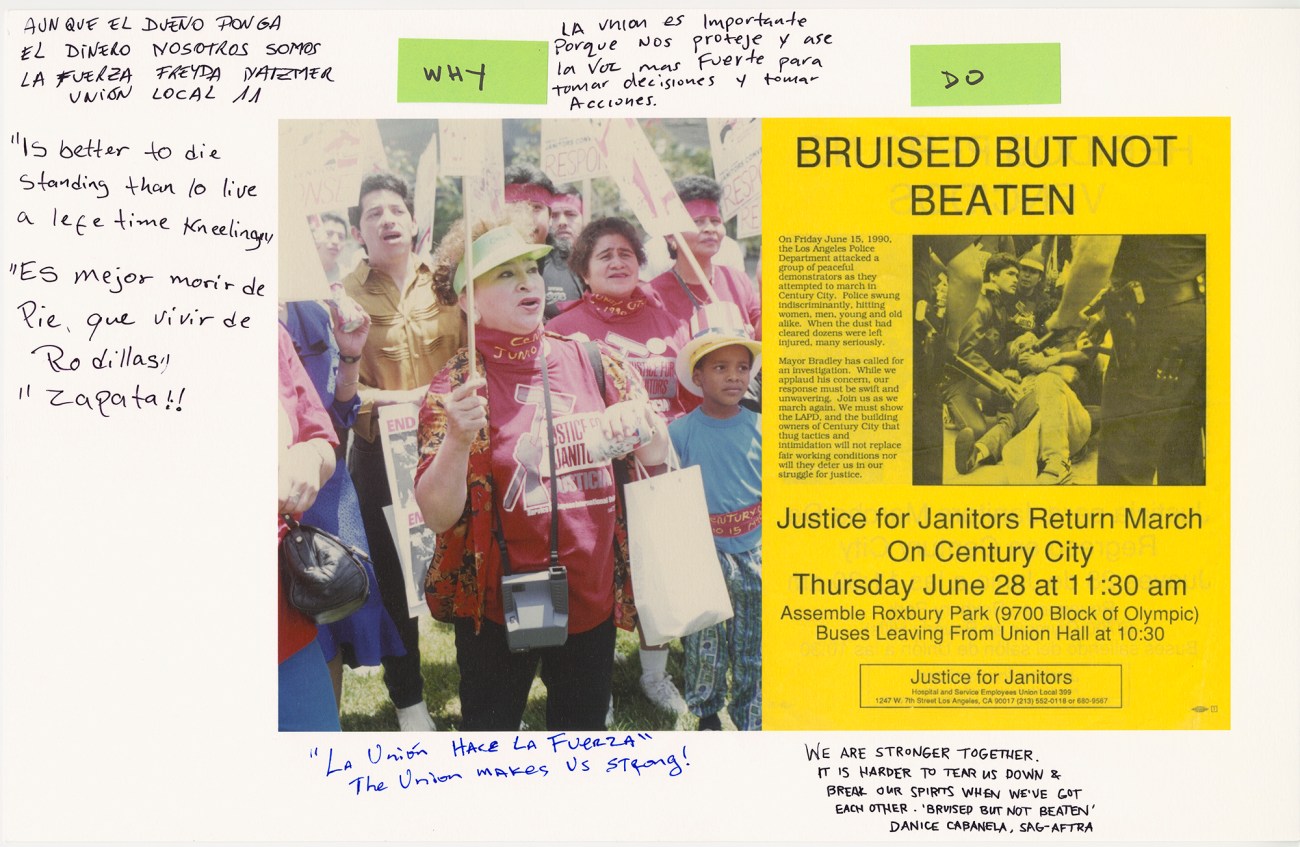
Left, an archival photo of a Justice for Janitors event. Right, a flyer distributed less than two weeks after striking janitors and their supporters were beaten by police. Union members voted to return to the streets, this time with a groundswell of local and national support.
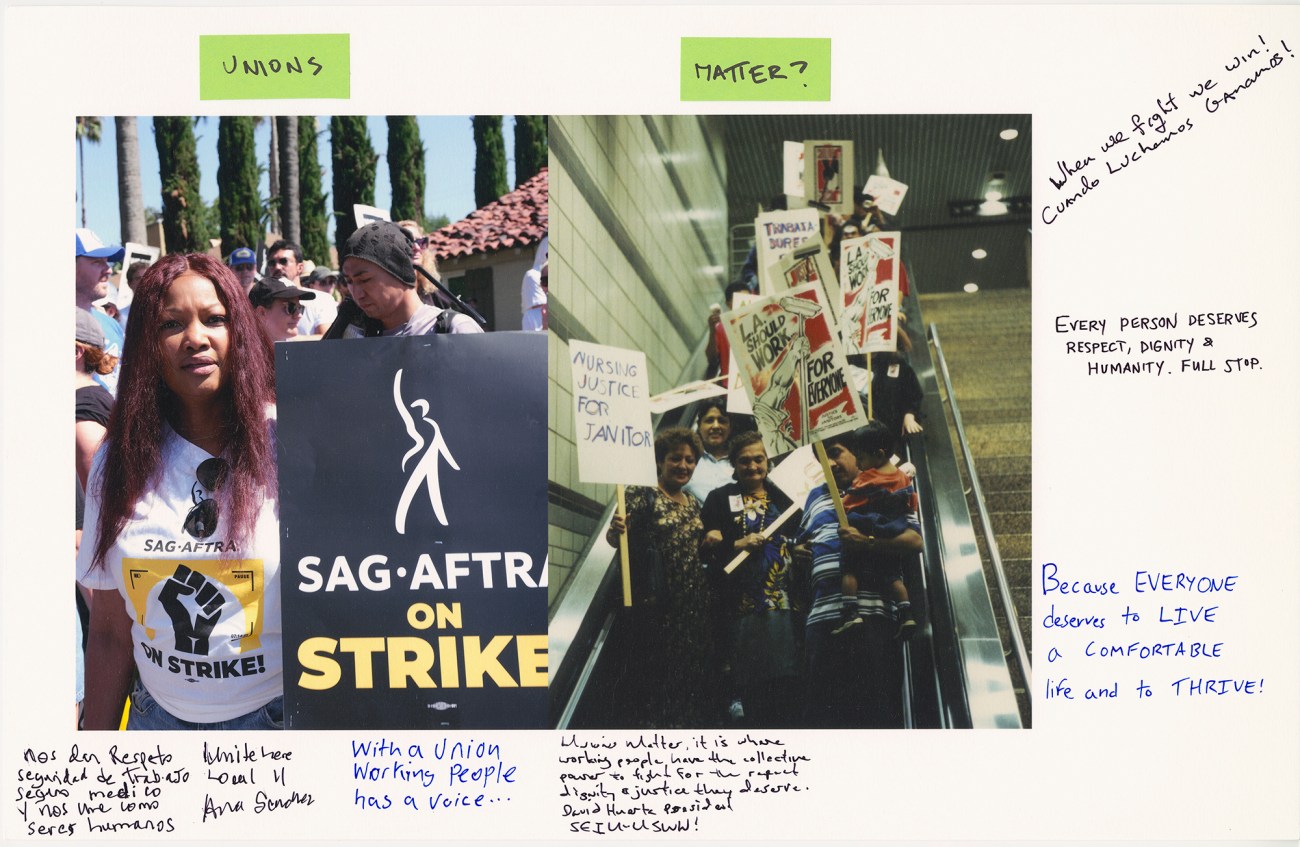
Left, a protester at a SAG and WGA rally outside Disney Studios in Burbank on August 22, 2023. Right, an archival photo of Justice for Janitors strikers.
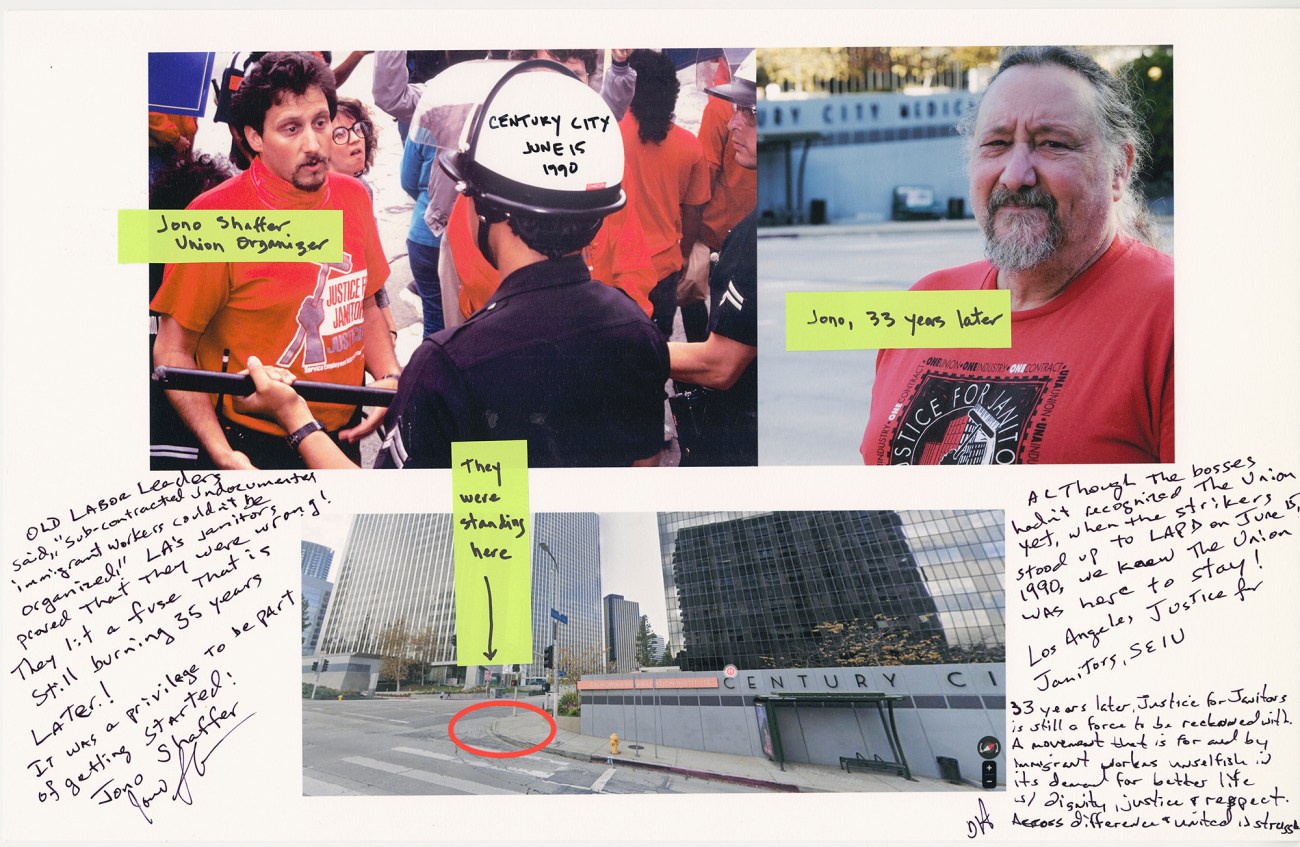
Left, an archival photo of Justice for Janitors labor organizer Jono Shaffer, a key architect of the campaign, talking to police trying to block the peaceful protesters. Moments later officers began beating the protesters, injuring several badly. Right, a portrait of Shaffer made at the same intersection on November 20, 2023. Bottom, a Google map screenshot of the corner where the photo of Shaffer and the police was taken in 1990.
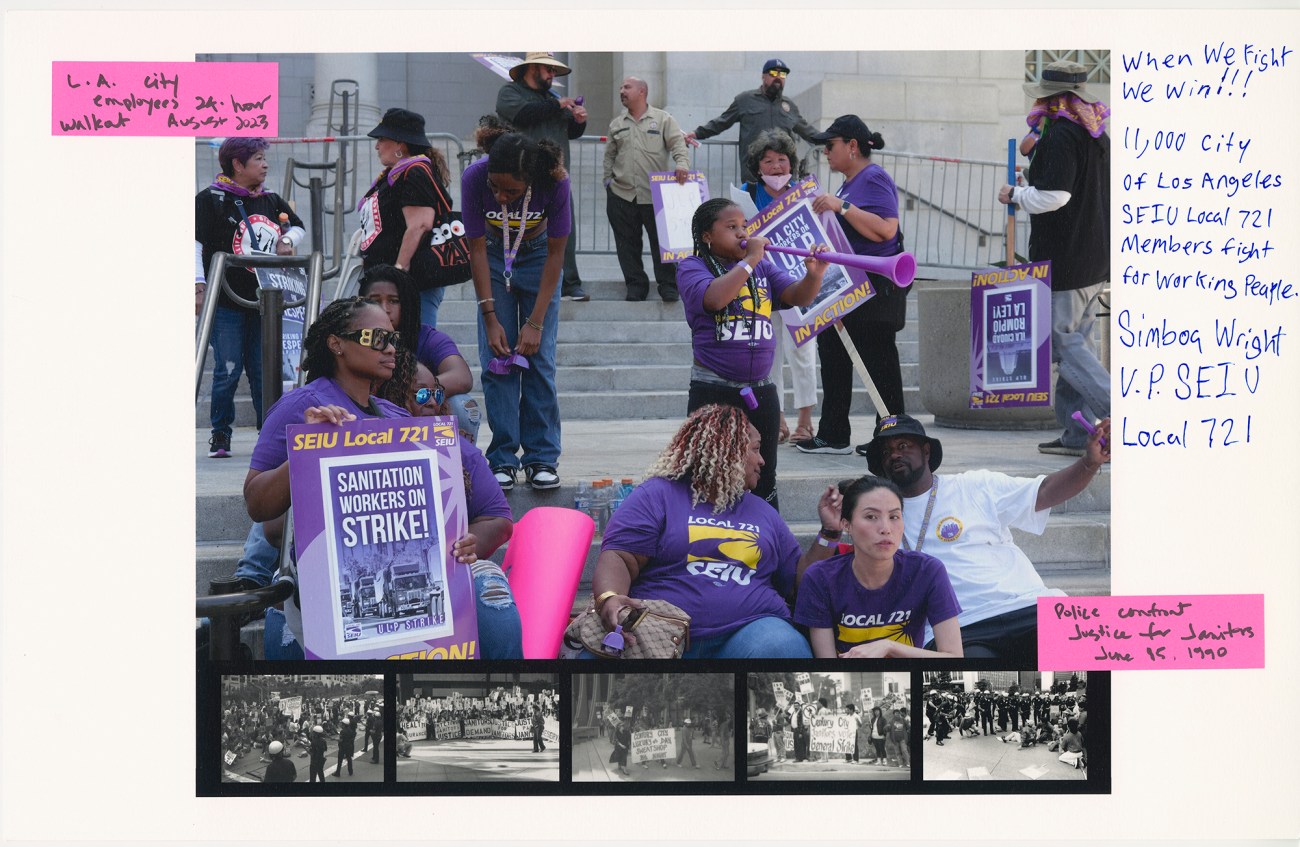
SEIU Local 721 walked out over what they called “bad faith bargaining” by the city in negotiations over a new contract. The black-and-white images below are archival images taken from contact sheets of the 1990 Justice for Janitors protests.
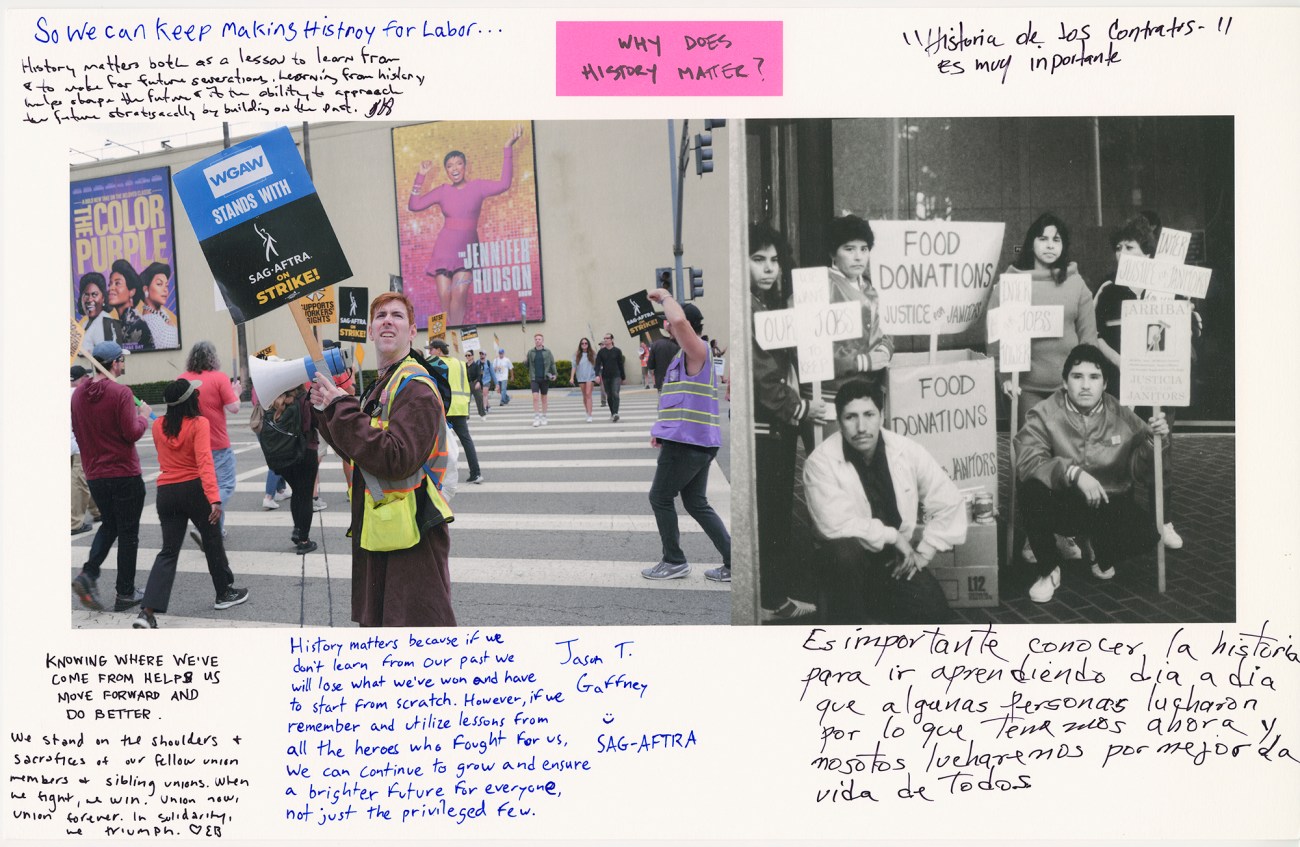
Left, a Screen Actors Guild strike in front of Warner Bros. Studios in Burbank on October 25, 2023. Right, an archival photo from the early 1990s of janitors protesting.
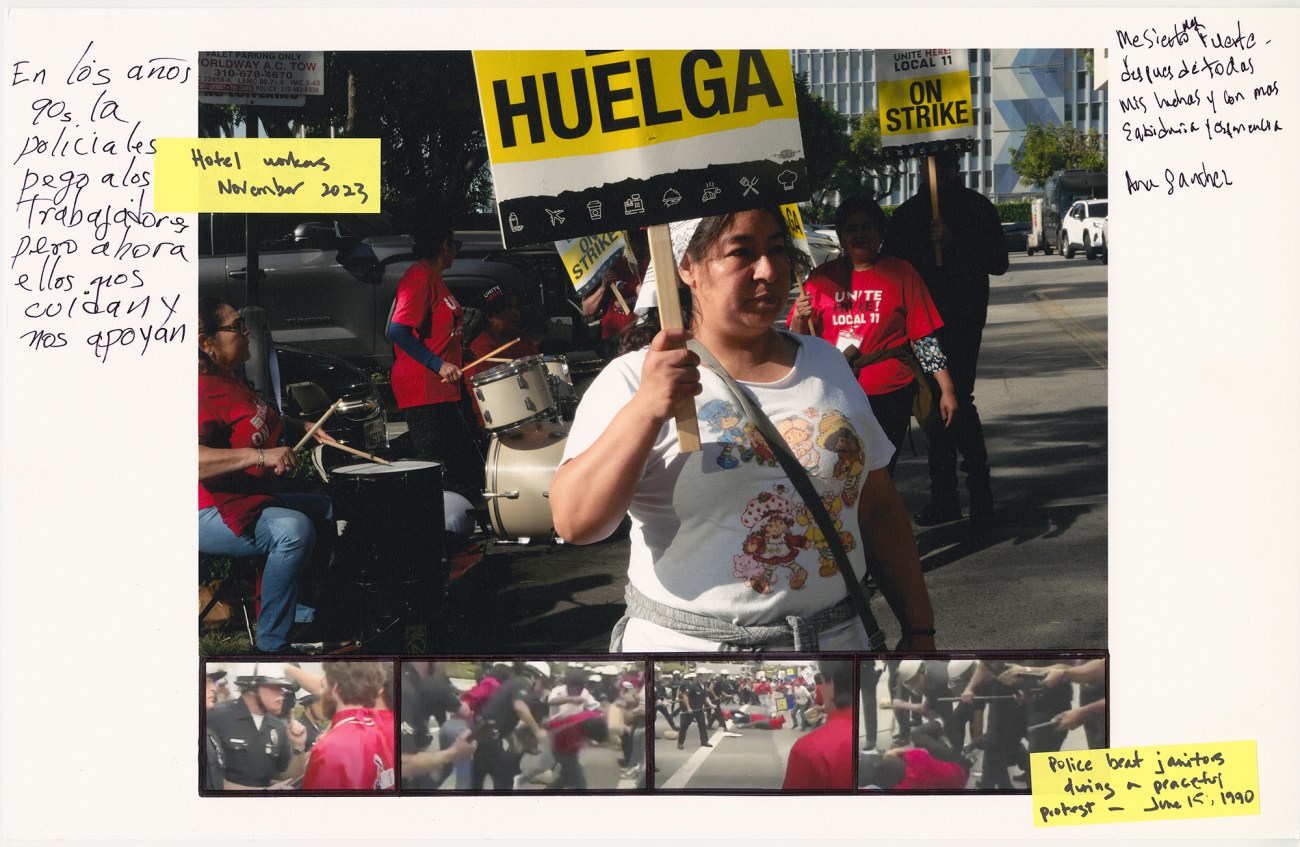
Hotel workers picket outside the Sheraton Gateway hotel, near LAX, as part of a months-long campaign of rotating work stoppages at hotels across the city organized by Unite Here Local 11. The film strip at the bottom is made up of screen shots from a 95-second video of the Justice for Janitors protest.
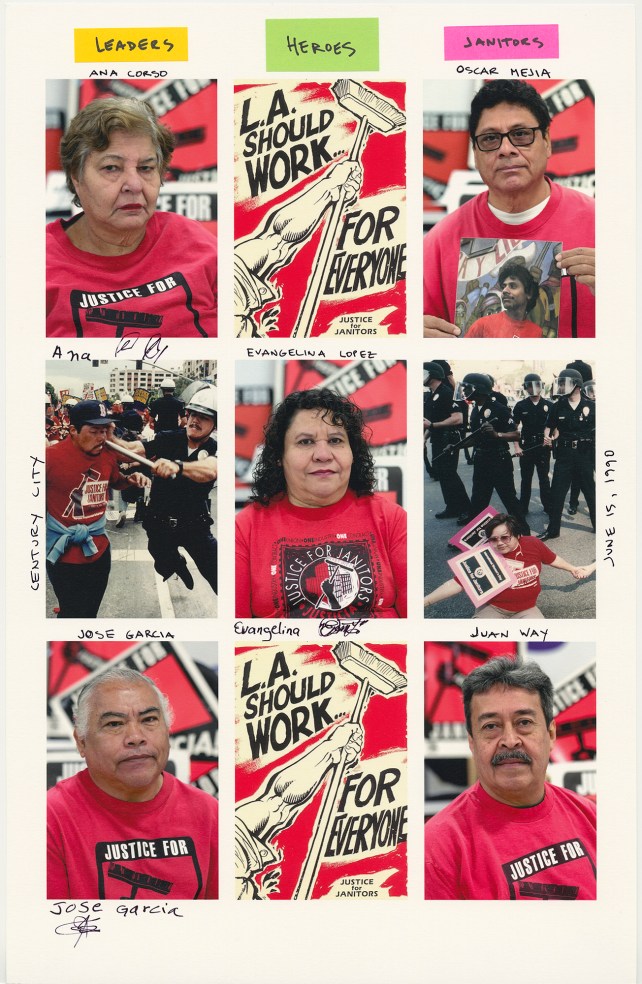
Justice for Janitors: portraits of five janitors who have been active in the Justice for Janitors movement for decades, taken November 30, 2023. Top left, Ana Castro; top right, Oscar Mejia (holding a photo of him taken at the Century City protest on June 15, 1990); center, Evangelina Lopez; bottom left, Jose Garcia; bottom right, Juan Way. The “L.A. Should Work for Everyone” graphic was used as the logo for the Justice for Janitors campaign in the 1990s. The color photos in the middle row are archival images of police and the protesters in Century City on June 15, 1990.















